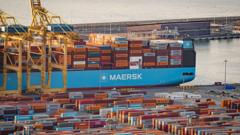After extensive negotiations fraught with tension, the United States and the European Union have come together to finalize a significant trade agreement just as the US gears up for further discussions with China. This crucial deal, initiated by direct confrontations between Presidents Trump and von der Leyen, is set to redefine trade relations – a move both sides can deem a success.
For the EU, the agreed tariff rate of 15% represents a better outcome than the initially proposed 30%. In contrast, the UK’s trade rate stands at only 10%, highlighting the dichotomy in international tariff structures. The US anticipates a substantial revenue boost of around $90 billion from tariffs alone, alongside $600 billion earmarked for incoming investments – though the timing and specific sectors for these investments remain ambiguous.
This arrangement, branded as a groundbreaking moment, has been years in the making, characterized by strong demands from both sides; each held firm as the deadline loomed closer. President Trump has long criticized what he perceives as Europe's unfair trade practices, pointing to a staggering $236 billion trade deficit from last year, wherein the US imported far more from the EU than it exported.
European Commission President von der Leyen has indicated a move towards rectifying this imbalance, emphasizing a need for a sustainable trade relationship. While the finer details of the agreement are still pending, there is mutual acknowledgment of the necessity to facilitate American access to European markets, particularly in sectors burdened by strict regulations.
This achievement follows other recent agreements with trade partners like Japan and the UK, indicating Washington's renewed vigor in trade negotiations. The current discussions with China, happening in Stockholm, raise hopes for a potential extension of tariff relief. However, the progress here remains tentative, with China maintaining a firm stance.
While the JC (Joint Committee) will be responsible for overseeing the implementation of this deal, the extent to which it can effectively alter trade practices remains to be seen. As the global economy holds its breath, this agreement offers a glimpse of optimism amidst broader uncertainties in international trade.


















